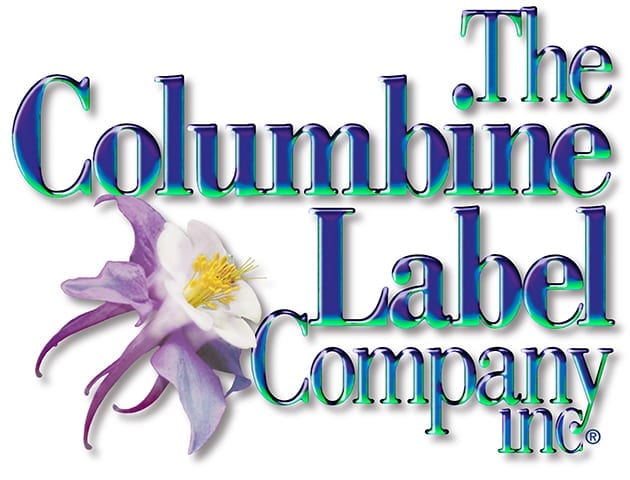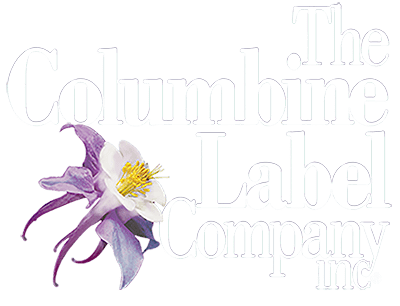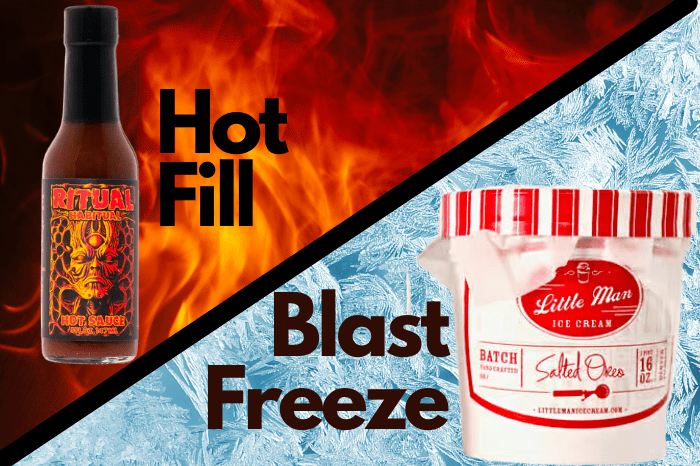Label Materials and the Importance of Selecting the Right Adhesive for Hot-Filled or Blast Freeze Products
Labels are an essential part of product packaging, providing crucial information and branding for consumers. However, not all labels are created equal, and selecting the right adhesive for label materials is crucial, especially for products that undergo hot filling or blast-freezing processes immediately after being labeled. In this blog, we will explore the importance of choosing the right adhesive for label materials and how adhesive becomes more durable on a product over time.
Hot Fill & Blast Freeze Products
Hot filling is a common method used in the food and beverage industry to extend the shelf life of products. It involves filling the product into containers at a high temperature, which helps to kill any bacteria or microorganisms and reduce the chances of spoilage. Common products that are often hot-filled include honey, sauces, sports drinks, and juices. Although, many others are hot-filled as well.
Blast freezing, is a rapid freezing process that quickly freezes products by exposing them to extremely low temperatures. Freezers come in a large range from 14 degrees Fahrenheit to as low as -184 degrees Fahrenheit. Blast freezers are commonly used for ice creams or sorbets, but can be useful for other product types as well
The Challenge
Both hot filling and blast freezing processes can pose challenges to labels if the wrong adhesive is used. One of the main challenges with hot filling or blast freezing is the extreme temperature changes that the labels must endure. Labels need to adhere firmly to the product surface, even when exposed to high heat or cold temperatures. If the wrong adhesive is used, labels can peel off, become wrinkled, or lose their adhesion, which impacts the not only the product aesthetic, but is a regulatory concern if labels fall off entirely.
Label Adhesive Types
To ensure labels stay intact and legible on products that undergo hot filling or blast freezing, it is crucial to select the right adhesive for label materials. Some adhesives are specifically designed for high-temperature applications, while others are more suitable for cold temperatures. For hot filling, adhesives with excellent heat resistance properties, such as solvent-based adhesives or hot melt adhesives, are recommended. These adhesives can withstand the high temperatures during the filling process and maintain their adhesive strength.
Similarly, for blast freezing, adhesives with excellent cold resistance properties, such as emulsion-based adhesives or rubber-based adhesives, are ideal. These adhesives can withstand the extreme cold temperatures during the freezing process and maintain their adhesive strength.
Stronger Over Time
It is also important to note that adhesive performance can improve over time on the product. Once the label is applied to the product and the adhesive cures or sets. This means that over time it can form a stronger bond with the product surface. This is known as “adhesive dwell time” or “curing time,” and it varies depending on the adhesive type and the product surface. Adhesives that require longer curing times tend to have better adhesion and durability on the product over time.
Selecting the right adhesive for label materials is crucial for products that undergo hot filling or blast freezing processes. Adhesives with excellent heat resistance or cold resistance properties should be chosen, depending on the application. Additionally, considering the curing time can help ensure that the labels remain durable and adhere firmly to the product surface. Consult with you label provider as they can provide valuable guidance and expertise in selecting the right adhesive for your specific applications.


